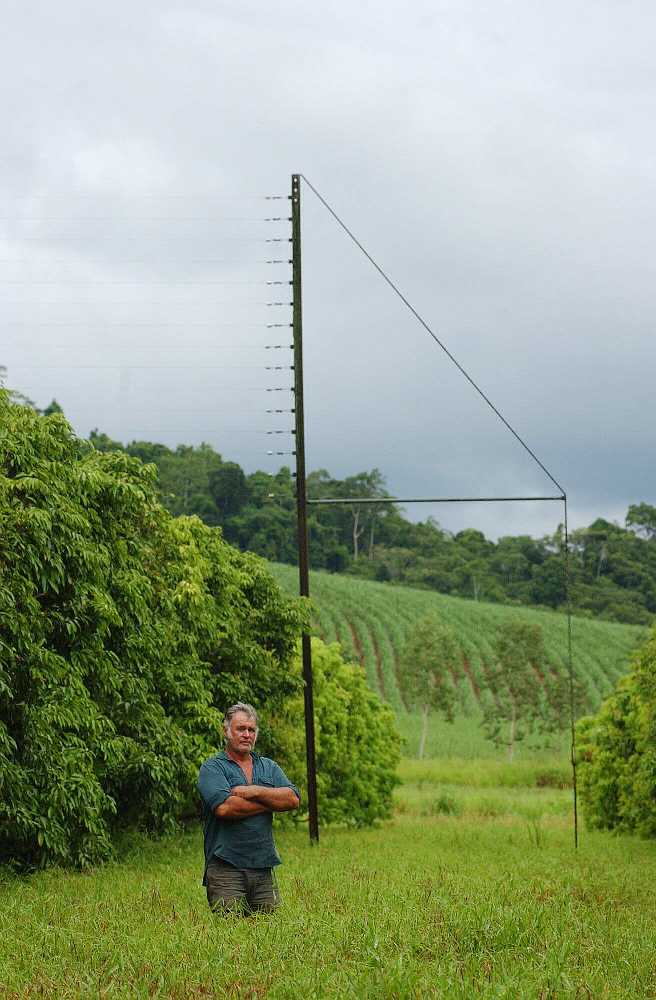This case shows the importance of public interest litigation to protect the environment where government regulators fail to act and the tenacity sometimes required.
This is a third case study of litigation against the mass electrocution of flying foxes to protect fruit crops. The other two cases are the subject of separate case studies:
- The Flying Fox Case in the Federal Court of Australia in 2000-2001; and
- The Frippery Case in the Queensland Planning and Environment Court in 2005-2008.
This case followed a radio interview in 2006 in which a fruit farmer, Dick Yardley, admitted:
“Not this last year but the year before we used our electric grids. We took out 700, we killed 700 bats in the electric grids. Another year before that by the time we got a damage mitigation permit which we now know we don’t have to get, the bats had eaten our crop right out because they took too long to give us that. The year before that we took out 400 in our electric grids.”
Flying-foxes are protected animals under the Nature Conservation Act 1992 (Qld) but, despite these admissions, the Queensland Government agency responsible for enforcing the Act, the Queensland Parks and Wildlife Service (QPWS), refused to take action to restrain the culling.
After QPWS declined to prosecute the farmer a conservationist, Dr Carol Booth, commenced an action in the Queensland Planning and Environment Court to restrain the operation of the grids and have them dismantled. The proceedings were brought under section 173D of the Nature Conservation Act 1992, which grants open standing for proceedings to restrain offences against the Act.
The Planning and Environment Court granted an interim enforcement order and a final enforcement order in late 2006.
However, the farmer did not dismantle the electric grids, resulting in further proceedings for contempt being brought in 2007.
The farmer continued to ignore the court’s orders, resulting in a second application for contempt in 2008.
It was not until after the second contempt proceedings were brought that the grids were finally dismantled.
It is noteable that despite the clear public admissions of wrongdoing by the defendant farmer, the case spanned two years and involved four court decisions before it was resolved. This is an example of the tenacity sometimes required in litigation.
Key documents
Advice on Prospects of Success
- Advice on Prospects of Success and Evidence given to the applicant prior to commencing the litigation (Note: This is normally a confidential document but is published here with the applicant’s consent after the successful conclusion of the case as an educational resource for students).
Originating Application
- Amended Originating Application commensing the litigation.
Evidence
Interim enforcement order
- Application for interim enforcement order.
- Outline of argument for interim enforcement order.
- Judgment of Rackemann DCJ granting interim enforcement order: Booth v Yardley [2006] QPEC 116.
Trial
- Closing submissions for final hearing.
- Judgment of Wilson SC DCJ granting enforcement orders: Booth v Yardley [2006] QPEC 119.
First contempt proceedings
- First contempt application.
- Outline of argument in first contempt proceedings.
- Draft order filed in first contempt proceedings.
- Judgment of Wilson SC DCJ in the first contempt proceedings: Booth v Yardley [2008] QPEC 5.
- Sealed Order and coverletter served on the respondents.
Second contempt proceedings
- Second contempt application.
- Outline of argument in second contempt proceedings.
- Supplementary submissions in second contempt proceedings.
- Further supplementary submissions in second contempt proceedings.
- Judgment of Wilson SC DCJ in second contempt proceedings: Booth v Yardley [2008] QPEC 100.
-
Dick Yardley standing in front of part of the electric grid on his farm
Photo: Cairns Post, 2006
-
Dr Carol Booth, the conservationist who was the applicant in the case
Source: The Courier Mail, 2007
-
Dismantled electric grids following second contempt proceedings
Dick Yardley, 2008
-
Dismantled electric grids following second contempt proceedings
Dick Yardley, 2008






